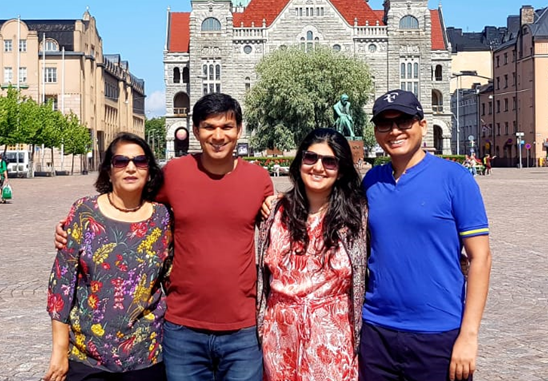
This is my first travel blog on my own website. My previous travel blogs are all on Facebook which I will gradually port to this website.
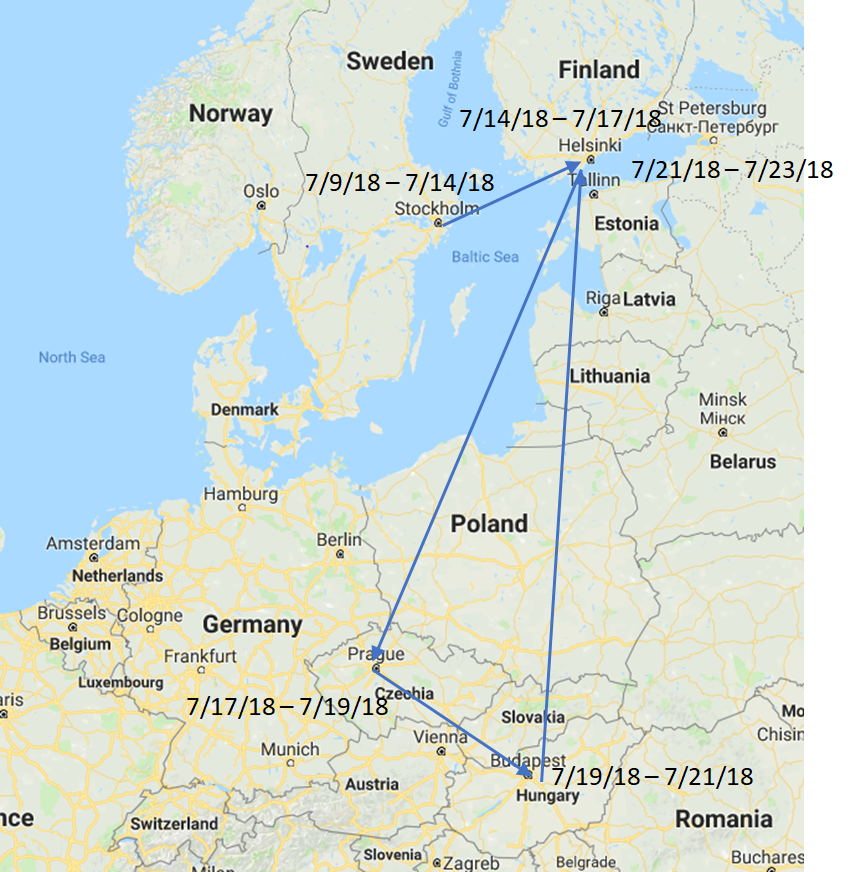
I covered four cities during this trip – Stockholm, Helsinki, Prague and Budapest. I’ll describe my experience in each city mixed with historical and cultural information about the city. Hopefully, this will be interesting to people in general, not just my close family and friends.
In a way, I got to relive my trip as I was writing this blog. I read up the details on the places I had visited and discovered new information, adding color and perspective to my travel experience and helping cement my travel memories. It took me about a week to write all this up. Writing doesn’t come natural to me, but it is a valuable skill and the more you do it, the better you get. After a while, you even start enjoying it 🙂
Table of Contents
1. Stockholm
I was in Stockholm from 7/9/2018 – 7/14/2018 to attend ICML 2018, a machine learning conference. I won’t say much about the conference itself as that is unlikely to be of much interest to readers not involved in machine learning. This was my fourth time in Stockholm. The previous visits happened when I was working at Autodesk. During those visits, I stayed in the Stockholm old town (Gamlastan) or within walking distance of it. During this visit, I stayed a couple of miles away at the Best Western hotel about a mile and half from the conference center. I had already done much of the usual touristy sightseeing during prior trips to Stockholm such as walking around Gamlastan, Vasa museum, boat ride on the water around Gamlastan etc. On this trip, I didn’t have much time for sightseeing, except for the last day of my stay when I visited the Stockholm Royal Palace.
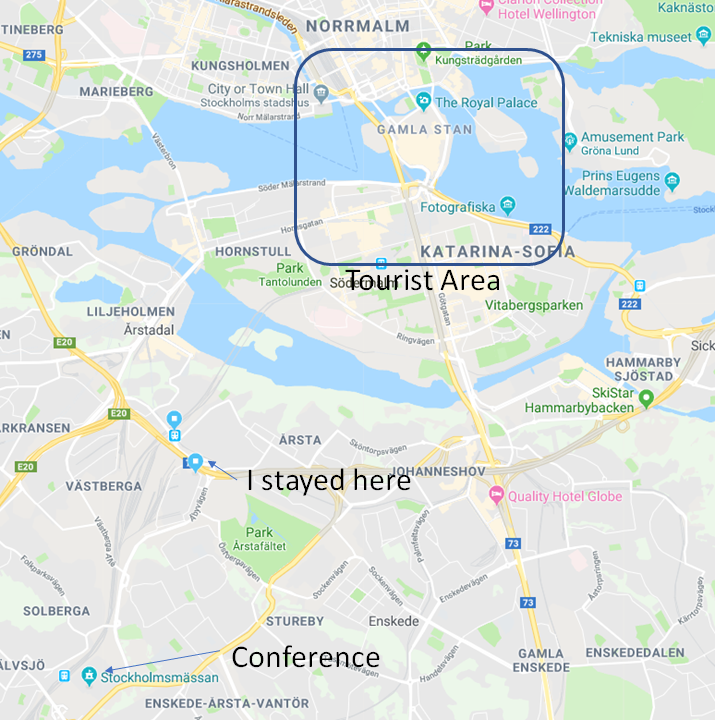
Taxis in Stockholm are outrageously expensive. I had to take a taxi one night when I stayed out past the last train and paid almost $65 for a 13 km taxi ride. Ubers are somewhat cheaper, but still very expensive. Thankfully, there is great public transportation consisting of the commuter trains, subway, buses and trams. As is common in Europe, public transportation is efficient, convenient, timely, frequent and relatively cheap. One of the things that Europe is very good at and America, not so much. It makes a big difference to your experience as a visitor/tourist when you are able to get around cheaply and conveniently. Luckily, the conference provided us with a week long public transportation card for Stockholm.
The first four days were mostly spent attending various talks at the conference and a few social events in the evenings. On friday, after the conference was over, I moved to the Scandic hotel in Gamlastan to be closer to the historical part of Stockholm. I had a nice dinner at a restaurant close to the hotel and then went salsa dancing to restaurant “Grammophone”. Salsa dancing is now popular in every big city in the world and a great way to meet some locals. I met a Swedish girl who had lived in the US many years ago as an AuPair and we had a nice discussion about the relative merits of living in Europe vs US.
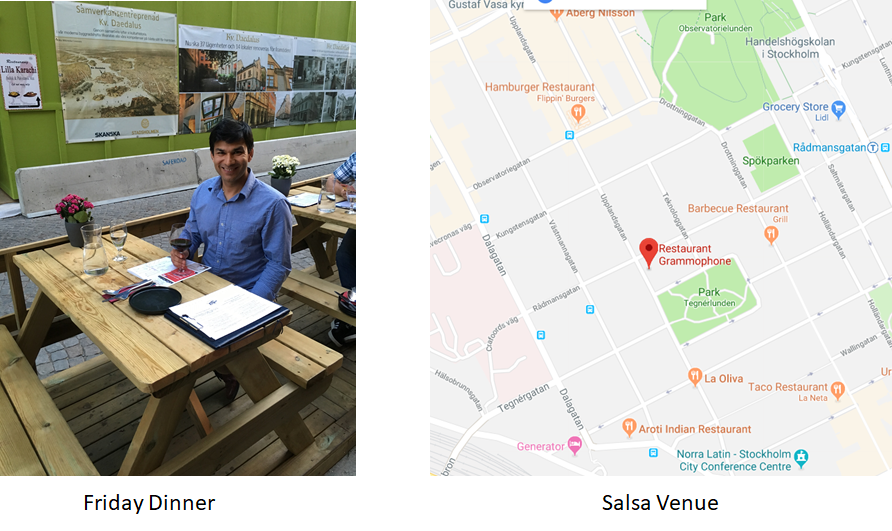
After the salsa dance, I met up with Tom, a professor at University of Maryland who I had met at the conference and we hung out at a couple of bars in Gamlastan.
The next stop on my trip was Helsinki, where my brother and sister in law live. My flight was later in the afternoon on July 14th, so I decided to check out the Stockholm royal palace in the morning. The tour was led by a Swedish guide who told us many interesting stories about the palace and the various kings and queens who have lived there since the 17th century. I’ll tell a few of those stories and some other interesting information about the Swedish royal family in the next few paragraphs.
The current royal palace was built on the site of the former Tre Kroner Castle, built in the 13th century. Nearly all of the palace was destroyed by fire in 1697, other than the Northern wing which had just recently been altered. Plans were immediately drawn up to rebuild the palace, with the expectation of taking 5 years to rebuild. Construction delays were as much a thing then as now. Nearly 60 years passed before the Palace was completed and the royal family could take up residence. In 1754, King Adolf Fredrik and Queen Louisa Ulrika and their family moved into the newly finished palace.

Some notable stories from Swedish history. Charles XII, king of Sweden from 1682 – 1718 ascended the throne at the tender age of 15. Detecting weakness in the Swedish throne, Russia under Peter the great attacked Sweden and launched the great Northern wars. Russia expected a quick victory, however Charles turned out to be a formidable military leader and inflicted a number of defeats on the much larger Russian military, including an important one at the battle of Narva in 1700 forcing Peter to sue for peace. Charles however got a bit cocky and marched on Moscow itself, this expedition led to a devastating defeat for the Swedes at the battle of Poltava. Charles was sent to exile in the Ottoman empire. He later returned to wage more wars against Denmark and Russia, but without much success. In 1721, the treaty of Nystad was signed leading to the loss of the Swedish empire and major power status within Europe. This treaty also led to the transfer of power from the king to the “Riksdag” (similar to a parliament) which was unique to Europe at the time.
Because Charles was so busy fighting wars, he never married and had no children. He was succeeded by his sister Ulrika. Since most of the powers of the king had passed to the parliament anyway, Ulrika saw no point in being empress and further abdicated to her husband Frederick the first. Frederick the first was a weak and mostly powerless king until 1751 and never fathered any children. When he died, a succession battle arose which leads to my second story.
Since Frederick died without leaving any heirs, a new king had to be found. The neighbors of Sweden – Prussia, Russia and France all had their favored candidates. Eventually, the candidate favoured by Russia – Adolf Frederick won. A decision was also made to create a triple alliance between Sweden, Russia and Prussia through dynastic marriage. The heir to the Swedish throne, Adolph Frederick was therefore to marry a member of the Prussian royal house (this ended up being Louisa Ulrika, the sister of Frederick the great, the Prussian King), while the heir to the Russian throne was to marry Sophie of Anhalt-Zerbst (the future Catherine the Great) who had been selected by Prussia. Interestingly, the choice of Ulrika was made by the Swedish envoy in Berlin (capital of Prussia, there was no Germany back then), not by Adolph Frederick who only saw his wife when she arrived in Sweden. So apparently arranged marriages were a big thing way back when! Also, given the enormous influence Catherine the great played in Russian history, isn’t it amazing how seemingly insignificant events in one country can have major, long lasting ramifications? Had Frederick not died childless, perhaps none of this arranged marriage stuff would have needed to take place and Catherine would never have become the Russian empress. Who knows what the future course of Russian history and by extension, world history would have been then.
Ulrika was not a queen content to tend to the gardens and attend tea parties with her friends however. She wasn’t happy about the fact that real power rested with the Swedish parliament and not the king. She tried to arrange for a constitutional coup before the accession of Adolf Frederick to the throne to wrest power away from the parliament and be vested in the new king, but failed. She tried again a few years later by attempting to buy the allegiance of some militia members to stage a coup against the parliament. She pawned off some of the jewels in the royal crown to raise money. The plot was discovered however and many of Ulrika’s followers were executed. She herself escaped punishment because of she was the sister of Frederick the great, the powerful king of Prussia.
Where Ulrika failed, her son, Gustav the third succeeded. In the revolution of 1772, he managed to overthrow democracy and reinstate absolute monarchy. Ulrika was very proud of her son’s achievement but had hoped to be the real power behind the throne but her son quickly made clear that he would make his own decisions. Her influence gradually faded and she died in 1782. Her son Gustav was an enlightened despot and spent considerable public funds on cultural ventures and military adventures that were not popular with the parliament itching to win back the power it had lost. Soon, some members of the parliament hatched a plot against Gustav. He was shot in the lower back at a ball in 1792 but didn’t die immediately. According to the story told to us by our tour guide, he was very ill and had high fever for many days. The window of his room was opened to make him feel better, but he caught pneumonia and died a few days later. According to the wikipedia article about Gustav, the cause of death was septicemia. A few years after his death, parliament gained power again in another coup and Sweden has been a parliamentary democracy ever since.
Quite a story isn’t it? I’m surprised someone hasn’t made a movie or TV series about the lives of Swedish royalty, particularly Louisa Ulrika who appears to have led a very colorful life.
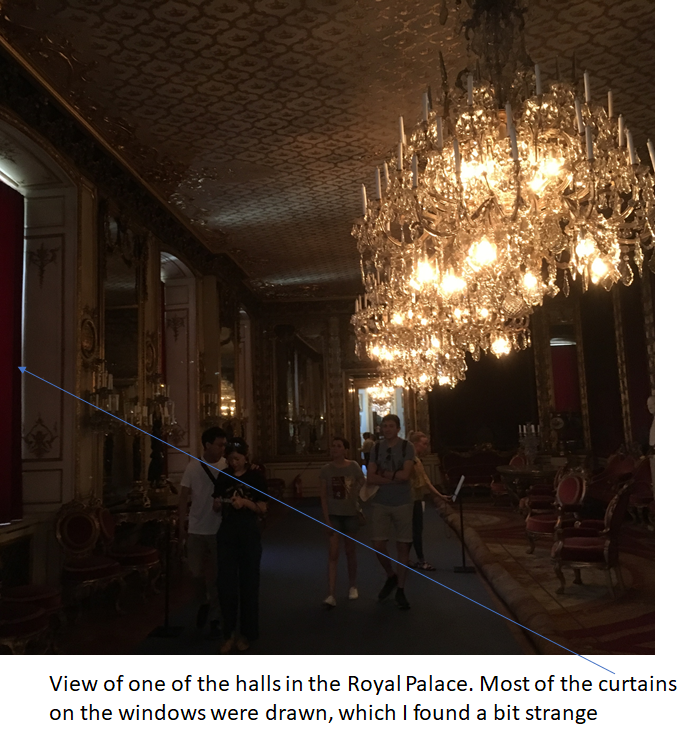
This was my fourth trip to Stockholm. I have a picture at one of the street corners in Gamlastan from my visit in Sep 2012. I wanted to revisit that corner and take another picture around the same spot. As I was walking back from the palace tour, I randomly stumbled across that corner. Here’s the before and after picture. The lighting conditions and the photograph angle is a bit different, but you can tell it is the same corner 🙂
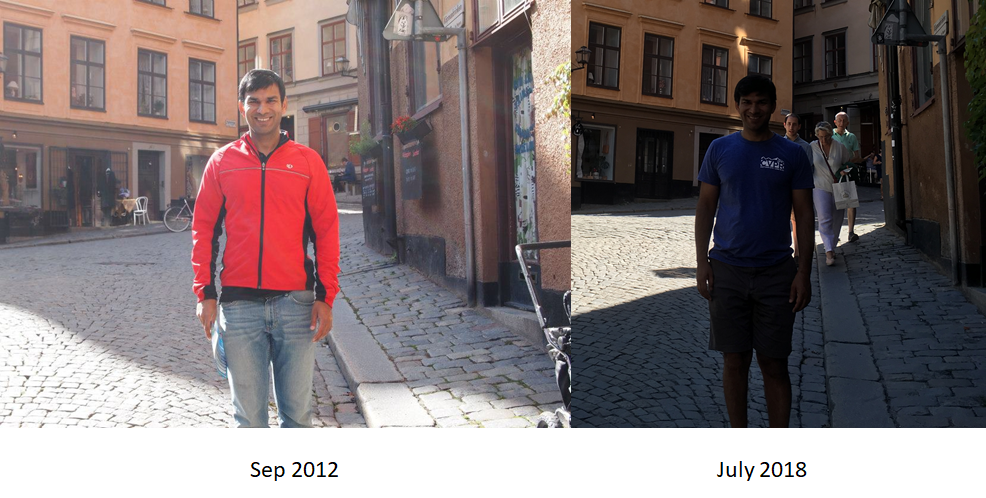
The soccer world cup was also underway during this trip. I watched a couple of games at local bars. Since neither Sweden nor any of the other Scandinavian countries which would have been natural second choices were in play, people’s allegiances were very mixed in the games I saw.
My stay in Stockholm was all positive, except for this one incident. When I first used the commuter train in Stockholm (on my first day there), I had to buy a paper ticket (I hadn’t received the metro pass issued by the conference yet). I got off the train at the Stockholm central station and made my way towards the exit. In the subways I have used in the recent past, the metro ticket is required to open the swinging doors (usually by touching it to the card reader) to both enter and exit the station. I expected that it would be the same with the Stockholm metro. When I arrived at the swinging doors near the exit, I didn’t see any place to insert my paper ticket to go through the doors. I went up to the attendant (an older, blonde haired woman) sitting behind a glass window near the doors to ask for help. I tried to make eye contact with the woman to get her attention but she wouldn’t look in my direction. So I tapped on the glass window. She still wouldn’t look at me. After a few seconds of this, she leaped out of her chair and out of her compartment and came up on the other side of the doors looking very annoyed and started asking me in a raised voice to just walk through the doors. I finally realized that you didn’t have to insert the ticket anywhere and could just walk through the doors. However I was shocked at her behavior. All she had to do was to tell me to walk through but was simply not making eye contact when I was attempting to ask her what to do. We had a heated argument for a few minutes about this and I told her that her behavior was highly unprofessional and rude. I asked for her name and she told me “absolutely not”. I was so angry that I reported her behavior to other attendants and then went to the main station office and filed a written complaint. I suspect that there was a bit of racism involved here and she thought I was a refugee or something like that.
This is the first time an incident such as this has ever occurred in the dozens of times I’ve been to Europe, including many times to Stockholm. I’d pass it off as a misunderstanding perhaps mixed with a bit of racism. Goes without saying (but I should still say it) that the vast majority of Swedes (like the vast majority of people anywhere) are wonderful, friendly and open minded people.
2. Helsinki, Finland
Next stop on my trip was Helsinki, Finland. My brother has been living there for almost 2 years now and my mother was also visiting from India, so this was family reunion + vacation. This was my third trip to Helsinki, one of my favorite cities. Helsinki is similar to Washington DC in population (~700,000), compact and full of lakes, bike trails and nice parks. I had already done many of the usual tourist activities on my previous trips there – bike ride around Helsinki, boat trips to neighboring islands etc. My visit happened to coincide with President Trump’s summit with Vladimir Putin of Russia, also in Helsinki. As expected, there were many protests around the city and my brother and I watched a few.
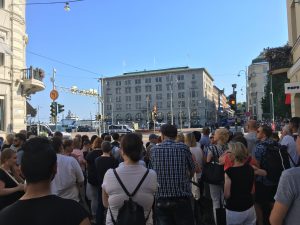
We also saw a standup comedy show by Ismo, a famous Finnish comedian. He was sitting on a bar stool before his show and we passed him on the way in. I said to my brother – “wow that guy really looks like Ismo!”, then I realized he was Ismo. I just didn’t expect a famous person to be so obviously in public view. My brother, sister in law and I all took pictures with him.
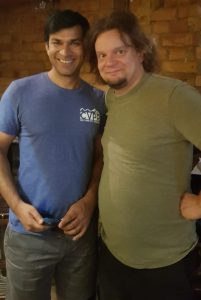
On Monday, I also went Salsa dancing at a local Salsa club. The salsa scene in Helsinki is surprisingly good. The people were very nice and friendly and the quality of dancing was very good. I made a number of friends who told me about many other social dancing events around the city.
3. Prague, Czech Republic
The next stop on the trip was Prague. I took a Czech airlines flight to Prague, which was timely and comfortable. I had picked an airbnb apartment for Prague and Budapest and was very happy with the apartments and my hosts. The hosts provided great directions to the apartments and the apartments were clean, comfortable, well located and relatively cheap (in comparison to hotels). As an aside, there is consternation in European cities about the popularity of abnb and the inconvenience it causes to the locals. Here’ an excerpt from a recent article in “The Economist” about this subject.
“Few think the tensions are over. Residents and tourists in effect operate on different time zones, says Fabiola Mancinelli, of the University of Barcelona. That mattered less when tourists gawped at a few churches before retreating to a large hotel. But it is harder to ignore the visitors who pose for selfies in the local market, sign up for mass bicycle tours, occupy your favourite bar and rattle their wheelie suitcases over cobblestones on their way to catch an early flight. Ironically, visitors who seek to weave themselves for a while into a city’s fabric may cause residents more trouble than those who simply poke around.”
Following the directions of my host, I took a short bus ride from the main airport to the Zlicin metro, followed by metro from Zlicin to Andel metro station. I purchased a 3 day public transportation pass from the airport, which cost ~300 Czech Krona (about 15$ at today’s exchange rates). My apartment was located within a mile of the major tourist attractions of Prague – old town, Prague castle etc. The public transportation in Prague just like in other European cities is so efficient that there is no reason to take a taxi anywhere.
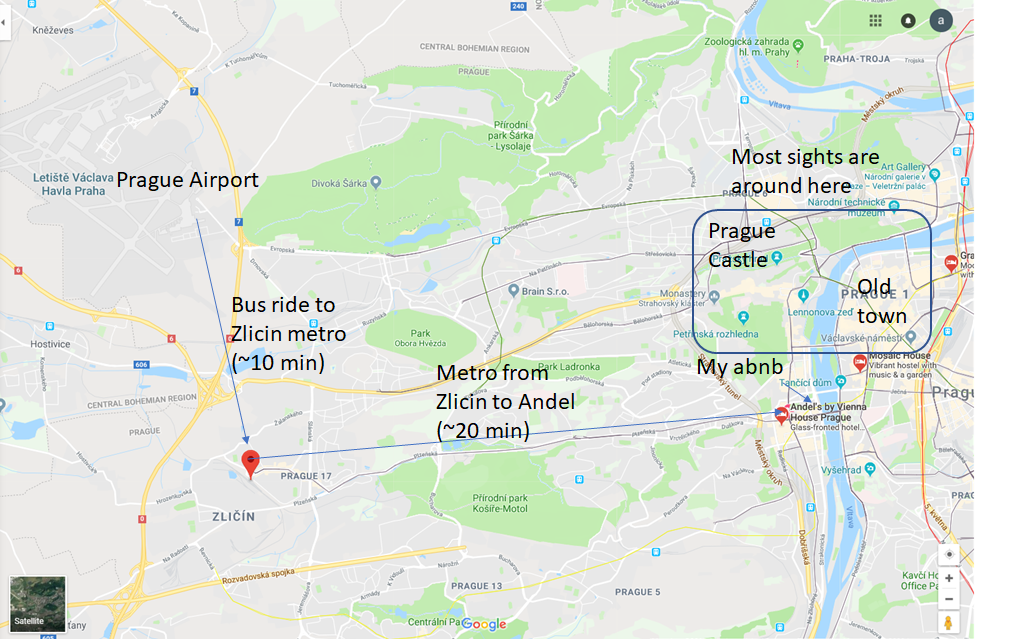
I had never been to Prague before but had heard great things about the city and they turned out to be all true. Prague is a beautiful city – beautiful architecture, neat and clean, great public transportation, good restaurants and lots of things to do. The first evening, I walked along the Vltava river to the old town and just randomly wandered around the old town taking in the sights.
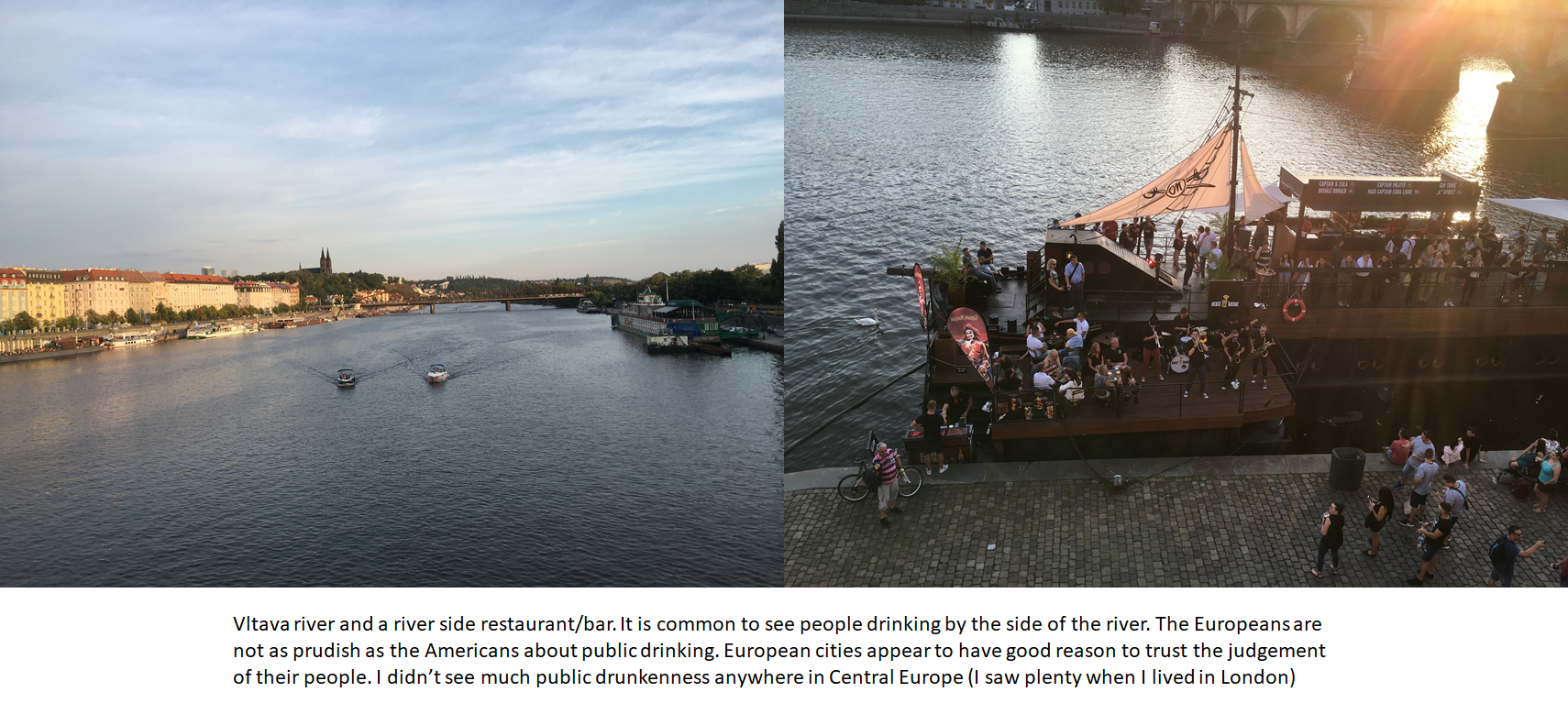
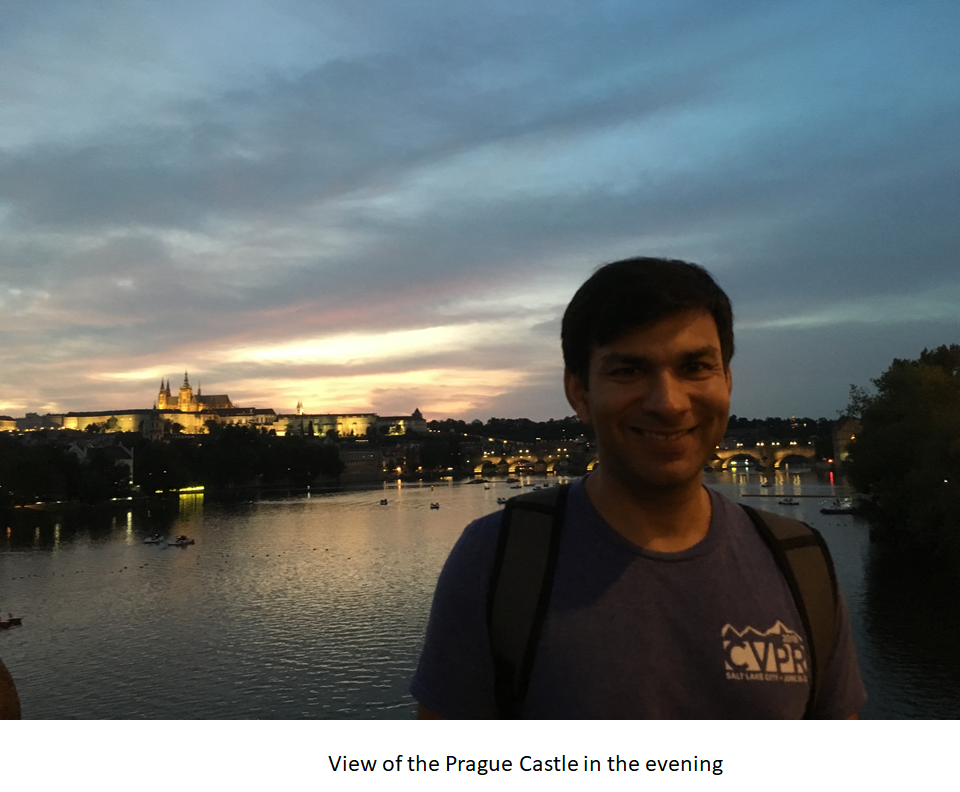
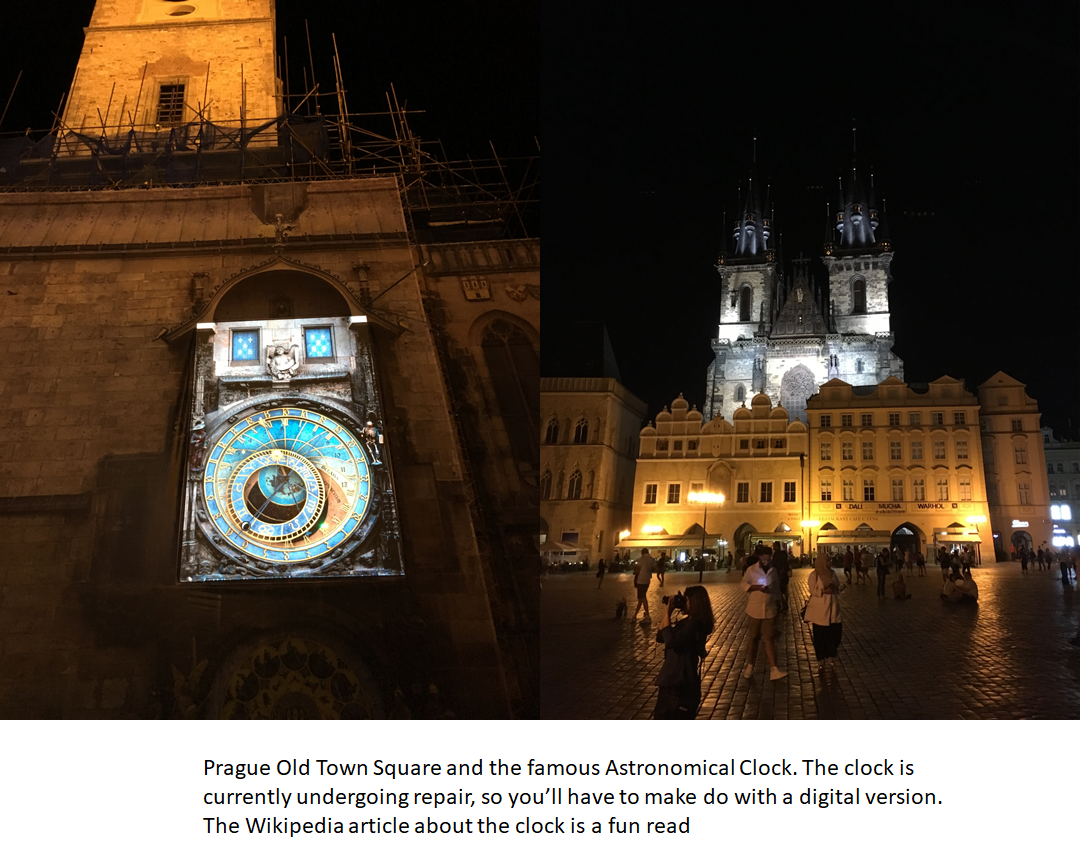
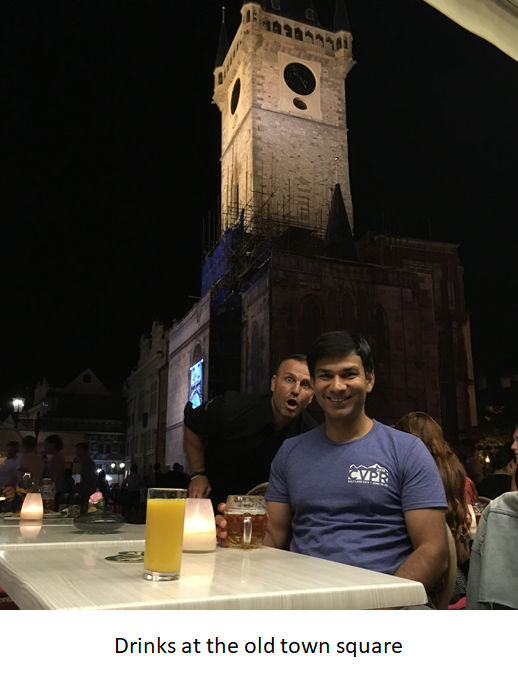
Brief History of the Czech Republic
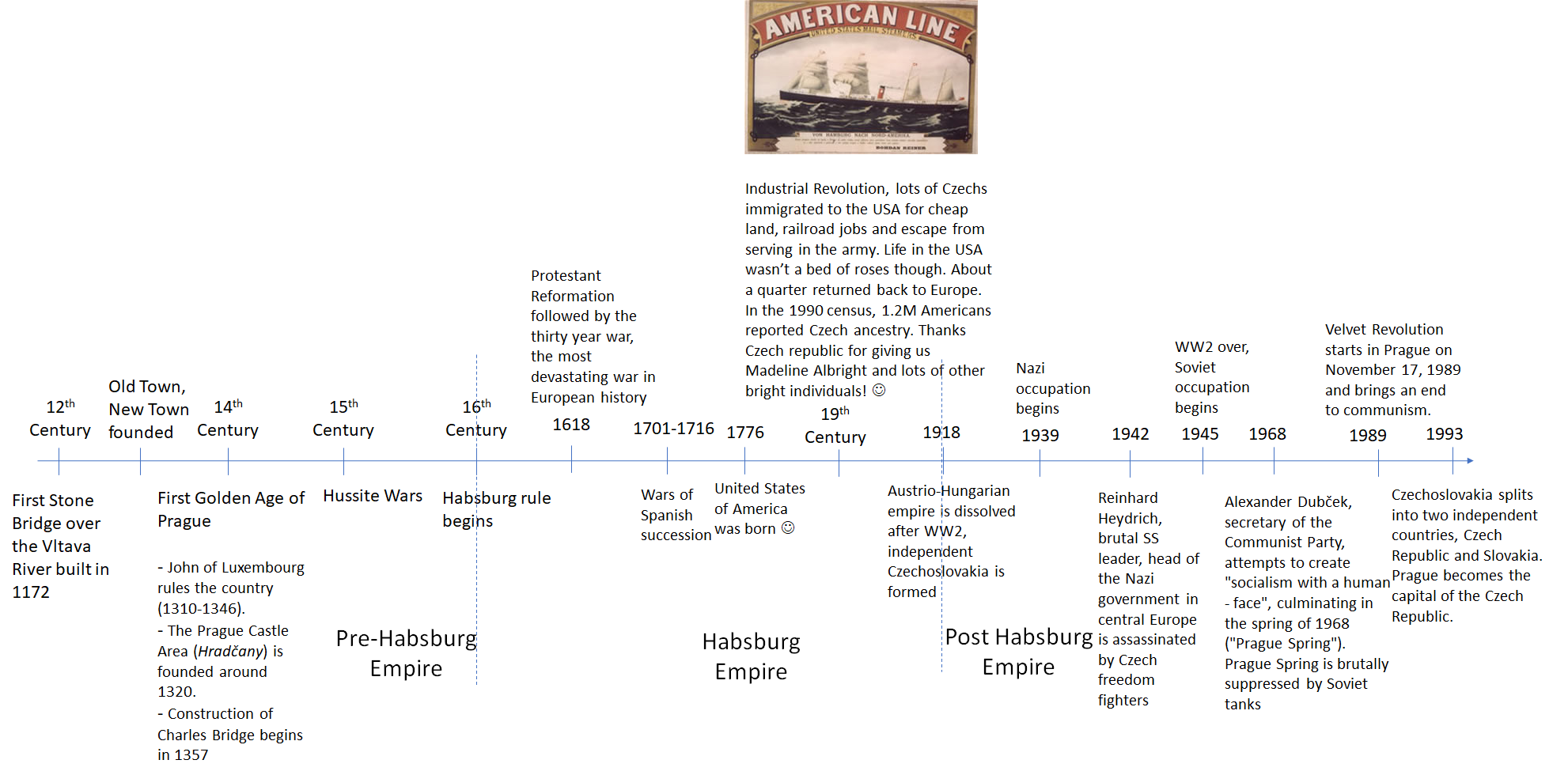
Broadly speaking, the history of the Czech republic and surrounding areas can be divided into three periods – before, during and after the Habsburg empire, one of the most important empires of Europe for 3 centuries before WW1 along with France, Prussia, Great Britain and Russia that played a role in every major conflict in Europe during that period.
The politics of pre-Habsburg Czech lands was extremely complicated as there were numerous small states and principalities (most of which don’t exist today as they have been absorbed into larger countries) with a complex web of allegiances. Read the wikipedia article about “John of Luxembourg” for an example.
You may have noticed the “Hussite Wars” that raged through Czech lands in the 15th century in the timeline above. I had not heard of this before, so I read a wikipedia article about it. Basically the Hussites were the followers of priest and scholar Jan Hus who denounced what he judged as the corruption of the Church and the Papacy, and promoted some of the reformist ideas of English theologian John Wycliffe. The catholic church under the pope and the holy roman emperor denounced Hus’s heresy and waged 5 crusades against him over the course of the 15th century, all of which failed. Eventually, the Hussite movement split into a moderate and radical faction and reached a truce with the Roman Catholic Church. So in a sense, the Hussites were a precursor of the protestants who were to follow a century later. Indeed, when the protestant reformation started in the 16th century, the Hussite movement largely accepted the protestant doctrine and merged into the protestant church. As a result of the Hussite wars, lands of Bohemia and Moravia (today’s Czech republic and Slovakia) were totally ravaged.
The Habsburg dynasty united central Europe into the Austro-Hungarian empire with Vienna and Prague as the most important cities. The Habsburg played a pivotal role in European politics throughout the 17th, 18th and 19th century, but had to constantly contend with the tremendous ethnic and linguistic diversity of their population as well as a hostile geopolitical environment, surrounded by hostile powers such as France, Prussia, Russia and the Ottomans. The dominant strategic thinking of the time was “realpolitik” which is defined as “diplomacy based primarily on considerations of given circumstances and factors, rather than explicit ideological notions or moral and ethical premises”. The goal of realpolitik was to prevent the emergence of a dominant power that could subjugate the others. This happened at various times during European history – two notable examples being Russia, Britain, Austria, and Prussia coming together to defeat a dominant Napoleon in the early 19th century and France, Britain and Austria banding together against Russia in the Crimean wars in the mid 19th century. American foreign policy on the other hand has always been the opposite of realpolitik (at least until very recently) – our foreign policy has been based on staying true to America’s founding principles – anti-imperialism and support of liberal democracy and free markets. We of course haven’t always been successful in this – America’s support for non-democratic leaders in South America to counter the spread of communism during the cold war being one of many examples. I like to think that at least we have tried :-). A great book about this topic is Henry Kissinger’s “Diplomacy”.
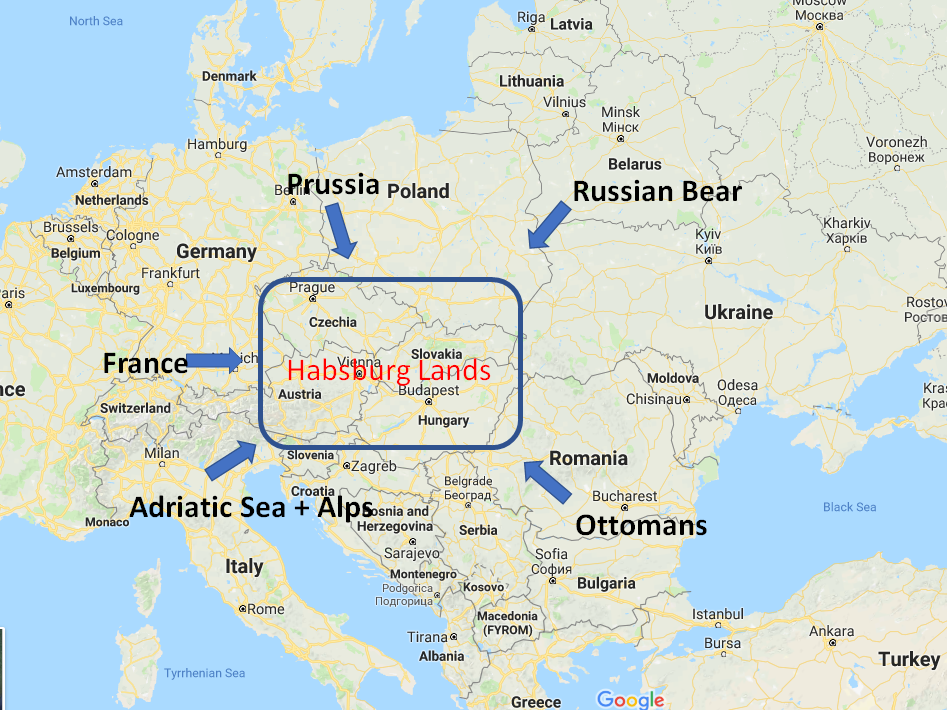
If you are interested in learning more about the Crimean War, I highly recommend “The Crimean War” by Orlando Figes. It tells a great story of what was going on in Europe around the time and how the personalities of the people in charge – czar Nicholas 1 of Russia, Napolean III of France and lord Palmerston of Great Britain played a paramount role in how events unfolded during this conflict, whose reverberations still echo in our time (think about the Russian annexation of Crimea).

The Habsburg empire happened to be on the wrong side in WW1 and was dissolved after the war. Its components – Austria, Hungary, Czechoslovakia etc., became independent countries. Today’s Czech republic and Slovakia bears deep scars of what followed. Czech lands around the German border were handed over to Hitler by France and Britain during the Munich agreement of 1938, which quickly turned into full scale Nazi occupation of central Europe. This was a grave mistake, not only because it was morally wrong, but also because Czech republic was one of the most highly industrialized central European countries and the German war economy greatly benefited from Czech factories, labour and raw materials. The Czechs suffered terribly under the new world order imposed by the Nazis (though less so than Eastern European countries as the Czechs were considered Aryans by the Nazis, and hence suitable for “Germanization”). After the liberation of central and eastern Europe by the red army, Czech republic fell under Soviet occupation. The Czechs rose in revolt against communist rule in 1968 in the “Prague Spring”, but the USSR and other Warsaw pact countries sent tanks and crushed the revolt. This was made easier by the acquiescence of the US, Britain and France who were busy dealing with the Suez crisis around the time. Given that they were abandoned twice by the west and left to their own devices in their time of need, it is not hard to understand why people in central Europe are a bit suspicious of “grand alliances”. Both Czech republic and Hungary have kept their own currencies instead of adopting the Euro, although they are part of the European Union.
Anyway – enough of the history lesson 🙂 and back to my trip. The next day, on a friend’s recommendation, I signed up for “the free walking tour”. These tours are led by students at local universities who are well versed in the history of the city and are a great way to learn about what to see/do, where to eat etc. The tours are free to join but you are expected to tip the tour guide. My tour started at the old town square and covered many of the important sights in old town.
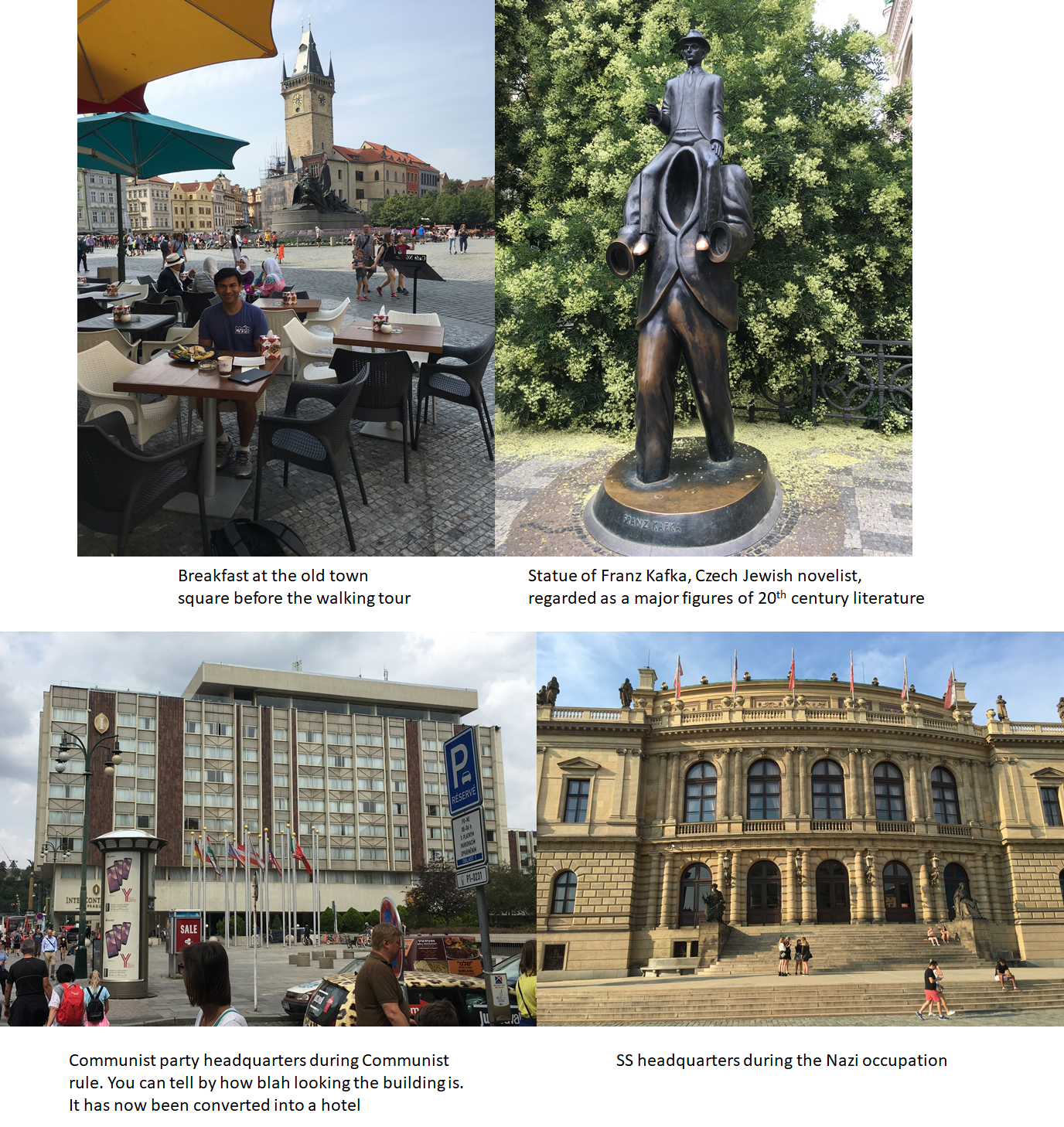
We also stopped by the Estates theater where Mozart performed during his many visits to Prague in the 1780s. According to the story told by our tour guide, during one of his stays in Prague, Mozart spent much of his time hanging out with the local women and enjoying the thriving social scene in Prague instead of working on his musical composition. When his patrons discovered this, they put him up on the other side of the river where the social scene was a lot quieter. After his relocation, Mozart finished his composition in one day.
Another notable stop was the Jewish quarter. The Jewish population of Prague was cordoned off to a corner of land near the river. The level of the land in those days was a lot lower than today, so the river would often flood, causing much misery to the local population. What is visible today as the first floor of many of the buildings in the area is actually the second floor of the original building, since the land has been raised many times since the construction of the original building. We also saw the Jewish cemetery, which had to be built in a multi-layered structure as the city of Prague refused to provision more land to bury the dead of the Jewish population once the original plot of the cemetery was full. Today the Jewish quarter is one of the most prosperous parts of Prague.
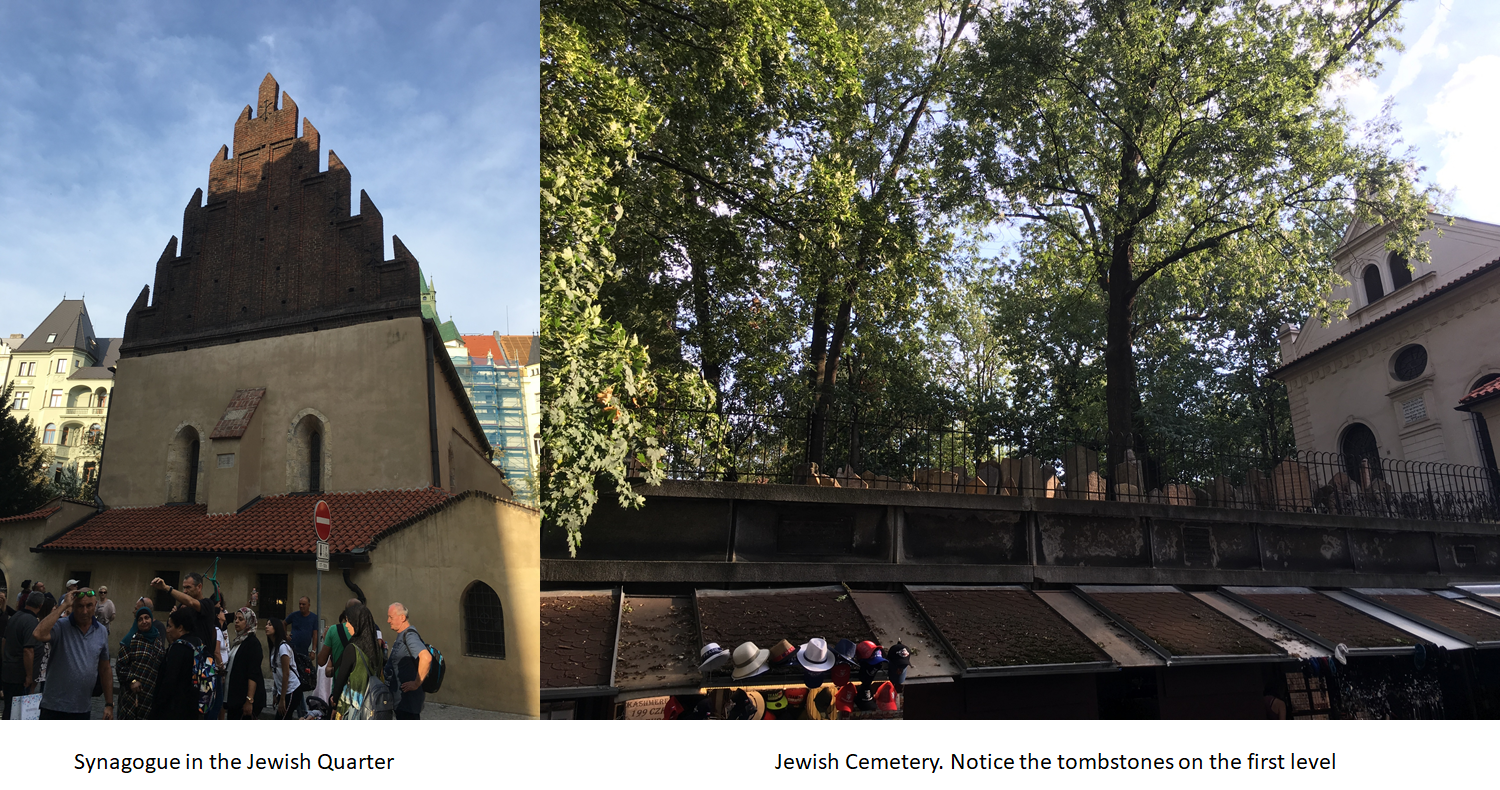
After the tour, I walked across the river to the Prague castle and St. Vitus cathedral. The most memorable experience here was the amazing views of the Prague skyline from the top of the south tower of the St. Vitus cathedral.
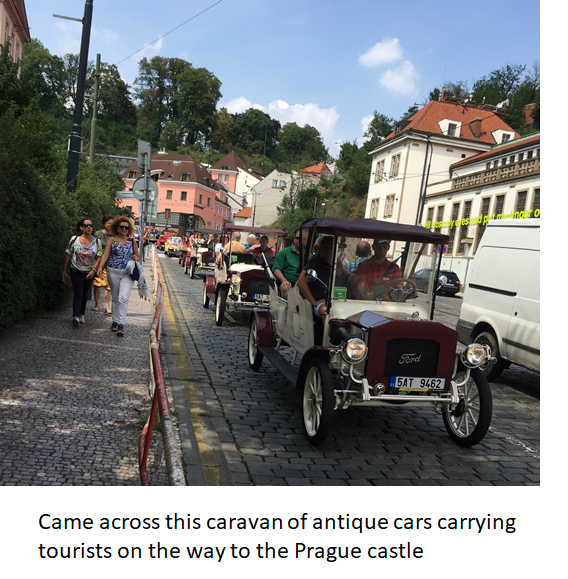
To get to the top, you have to climb up a winding staircase of 287 steps, but the view from the top is totally worth it.
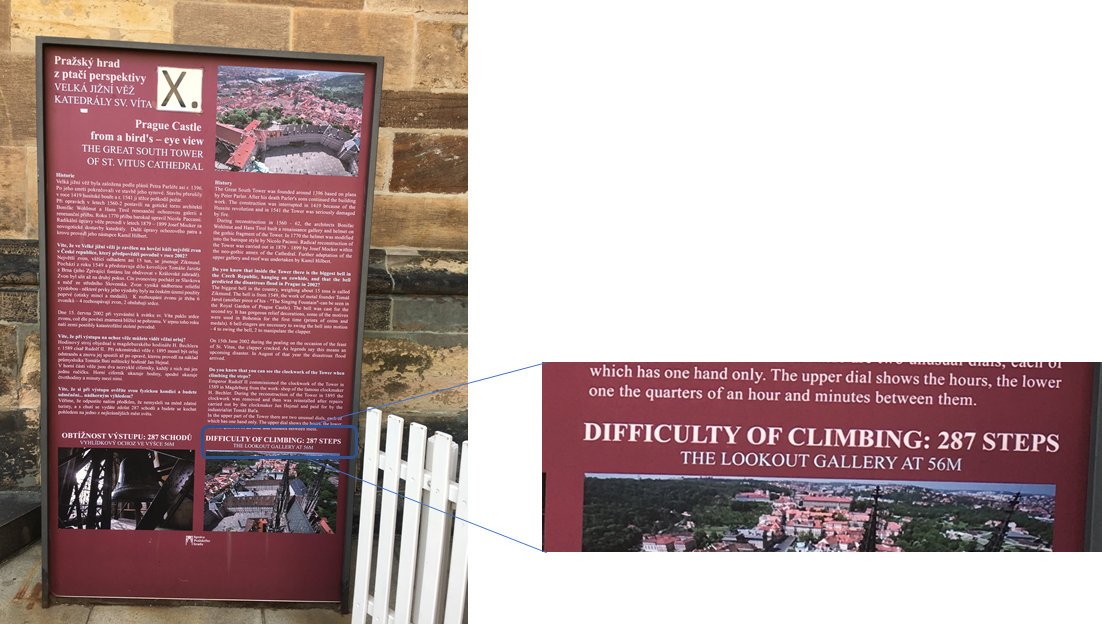
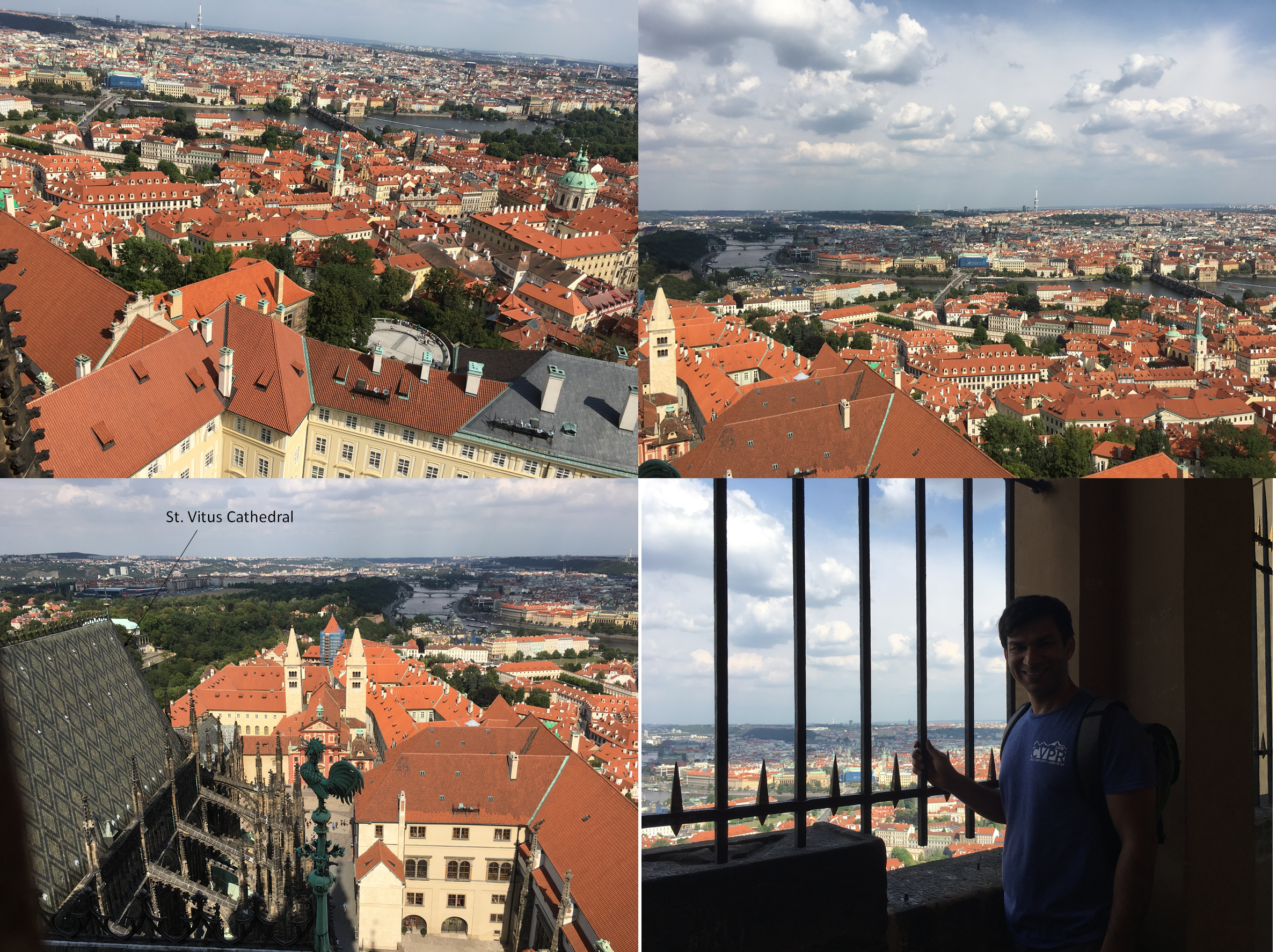
Following the visit to the castle, I walked back across the Charles bridge to the other side of the river and got dinner. You may have noticed, I’m not much of a foodie so you won’t find much information about local cuisine in my travel blogs. I enjoy good food of course, but food is not at the top of my mind when I’m traveling.
I was wondering about what to do in the evening, when I thought of InterNations – a community of expats with chapters all over the world. I’m a member of their Washington chapter and have met some great local people by attending their events on my previous trip to Europe and Asia. I looked up their website if they had any events that evening and they happened to have a karaoke night at a local bar. So I metroed over to the bar and mingled with some friendly locals and expats (including a couple of Americans, one of which lived in Washington DC for many years and knew many of my Washington friends).
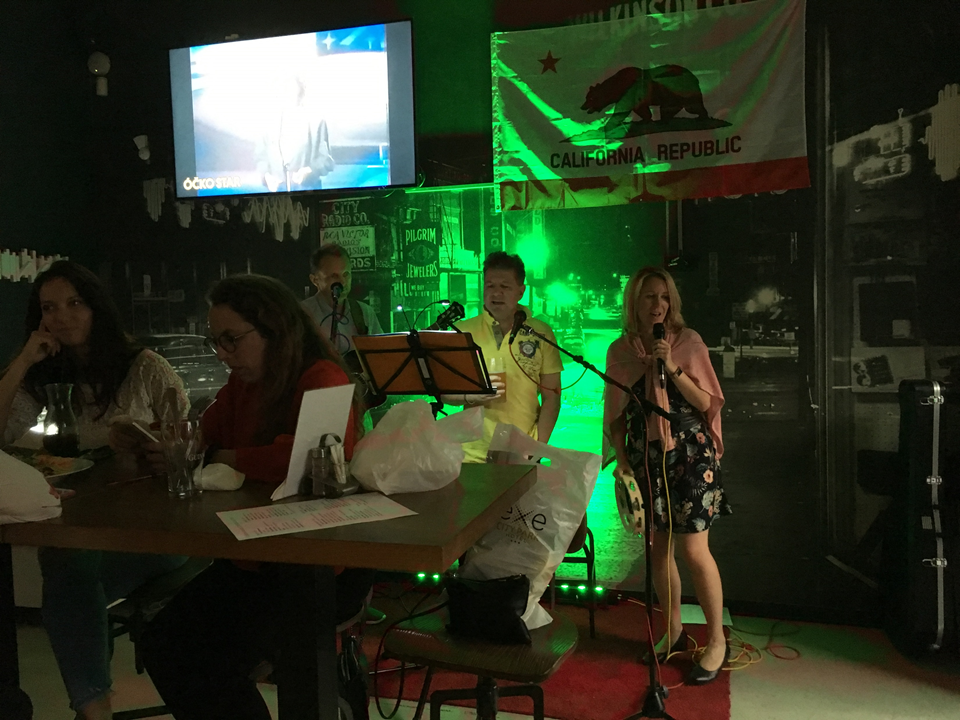
4. Budapest, Hungary
That was the end of my stay in Prague. The next day I was scheduled to leave for Budapest. I had booked an abnb in Budapest, but not a bus or train from Prague to Budapest. When I finally started looking at transportation options, I found many options with a significant variation in prices. There is a direct train that takes about 7 hours (see https://www.raileurope.com/) and costs about $80. I found a much cheaper option through RegioJet (https://www.regiojet.com/) which involved a train ride from Prague to Bratislava in Slovakia followed by a bus ride to Budapest. The total travel time was only about an hour more than the direct train option and the cost only ~$22. It sounded almost too good to be true. Anyhow, I booked this option thinking that at best I’d get to Budapest very cheaply and at worst I’d have an interesting travel experience.
My train left morning of the next day from the Prague central train station. I had an interesting experience trying to find the train platform. My platform number was “4J”. The 4 part was easy enough, but I was wondering what the J meant. I walked up and down the platform looking for any letters, but didn’t see any. Finally (worried that I may be on the wrong platform), I asked a Czech looking guy who helpfully explained that “J” is the first letter of “Jih”, the Czech word for “south” (the direction). So “J” indicated which side of the platform to stand on. The other side would have been “S”, initial for “sever” the Czech word for north. Now you know.. 🙂
The train ride to Bratislava was very comfortable. I had a nice, comfy seat in a compartment with four other people. The seat had a power outlet so I could charge my phone. We even got free coffee on the train. Looking out of the train window, I enjoyed views of the Czech countryside – mostly flat farmland dotted with small cities. About an hour before the train pulled into Bratislava, the terrain got more hilly and the train slowed down a little.
From the Bratislava train station, I needed to take a local bus to the main bus station from where my bus to Budapest was scheduled to depart. One of the guys in my compartment was a local and he explained where to catch the local bus from. It was all fairly straightforward. Compared with Prague, Bratislava looks a lot more run down. The infrastructure is shoddier and people less friendly. My bus from the Bratislava bus station was about an hour late – this was the only “bad” part about the travel experience on Regiojet. After waiting for the bus for half an hour and wondering what was going on, I finally received an email from Regiojet that the bus was running late. Anyhow, finally the bus arrived and I was on my way to Budapest. The bus ride was comfortable and we even got a free bottle of water on the bus.
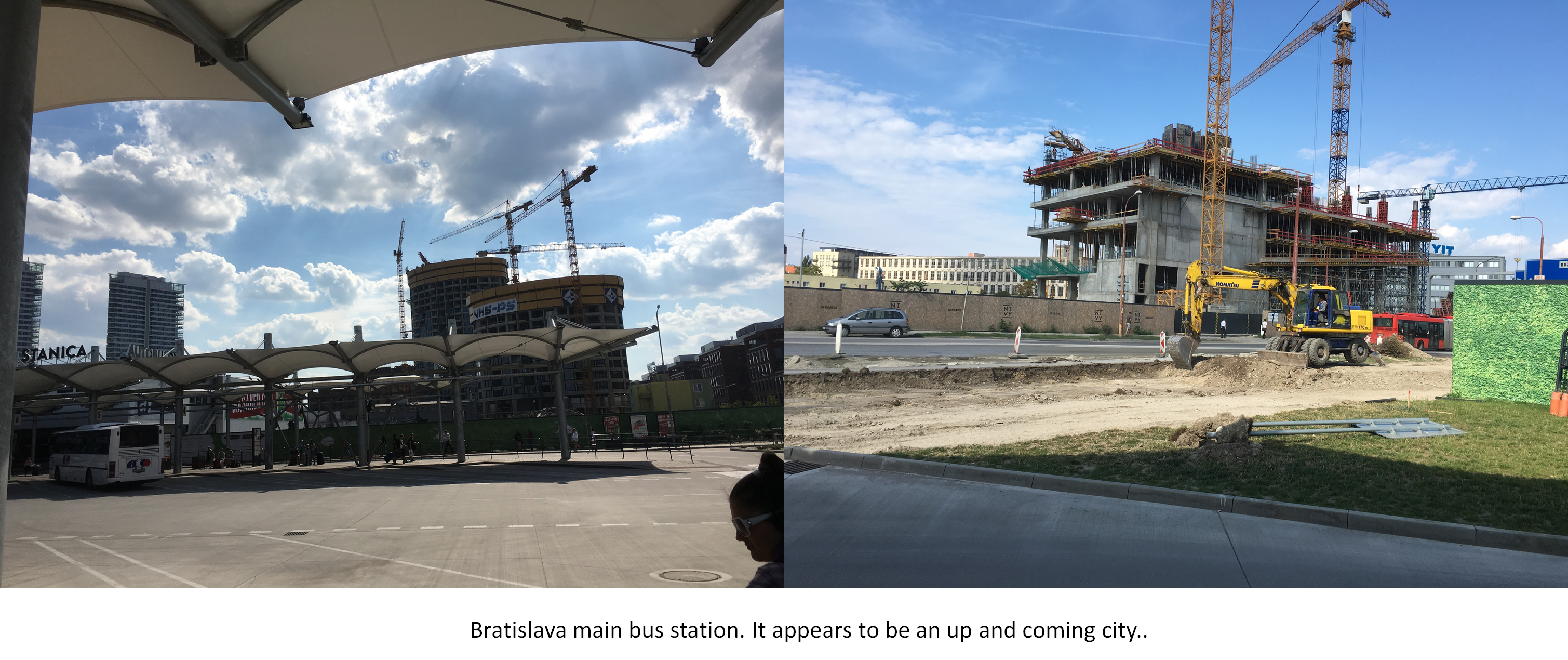
Getting to my Abnb apartment from the bus station was again very straightforward. Short walk from the bus station to the metro, followed by a 20 min metro ride. Buying a metro pass required assistance from a passersby as the instructions on how to buy a 2 day pass weren’t very clear.
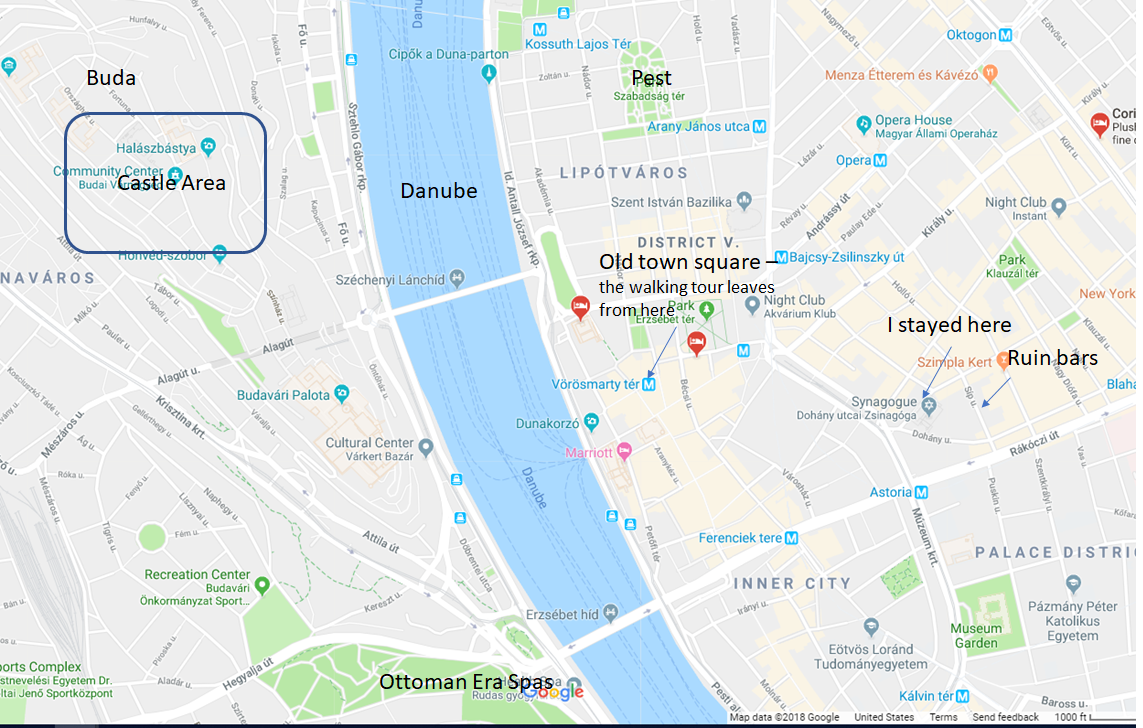
My apartment was on the top floor of a 100 year old building, so getting to my apartment via a tiny elevator through dimly lit corridors was a bit of an experience in itself. The apartment was very comfortable and modern with a nice loft. My host provided great suggestions about where to go to eat and what to do. One of his suggestions was to check out the “Ruin bars”, the oldest of which called “Szimpla Kert” happened to be right behind my apartment. Ruin bars are basically an abandoned factory or warehouse that has been filled with eclectic furniture, weird art, random items from the communist era with cocktail bars, music and lots of people. I got some dinner and then walked over to one of these bars and got some drinks. Hungary has not adopted the Euro (at the time of this writing) and has its own currency called “Forint”. At the bar, they accepted payment in Euro but would only return change back in Forints and at a much lower exchange rate (about 20% lower) than the market rate.. a bit of a rip off. The bar itself was an interesting experience. There were a lot of people from all over Europe speaking a variety of languages.
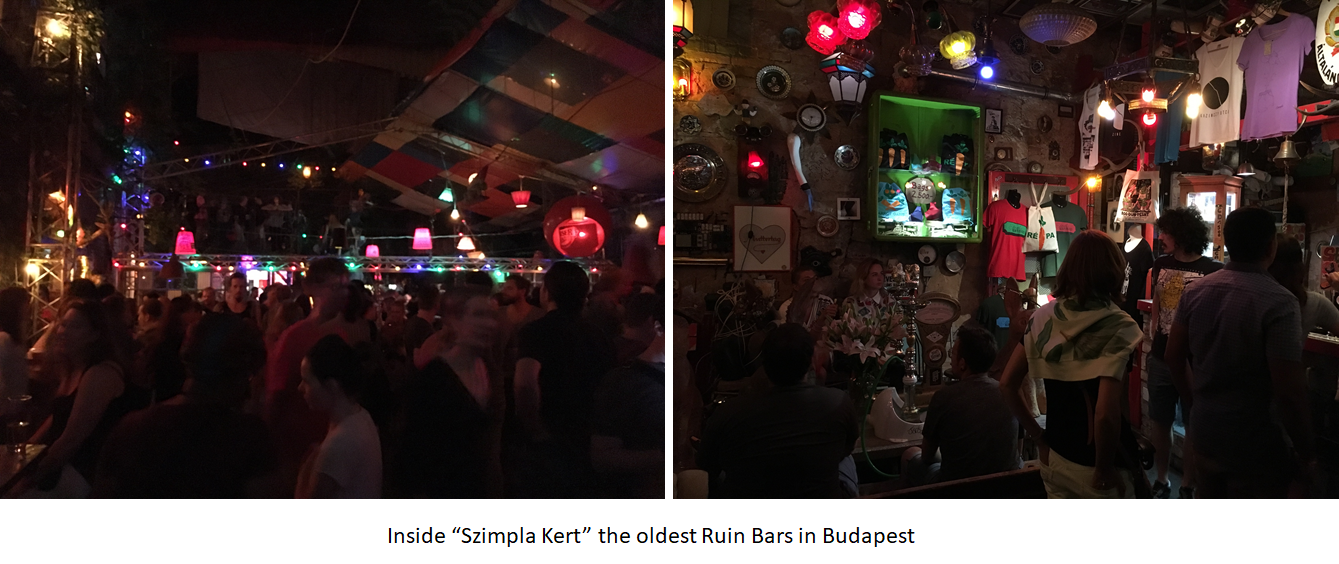
The general trend as you travel east through former communist Europe is that infrastructure gets shoddier, people less friendly and service poorer. I found the general infrastructure in Budapest, being a major European capital to be definitely better than Bratislava, however it seemed crummier than Prague. This is a very general feeling as I was in Prague and Budapest for only a couple of days. If I spent more time, perhaps I would feel differently.
History of Budapest
A timeline of the history of Budapest (and Hungary) is shown below.
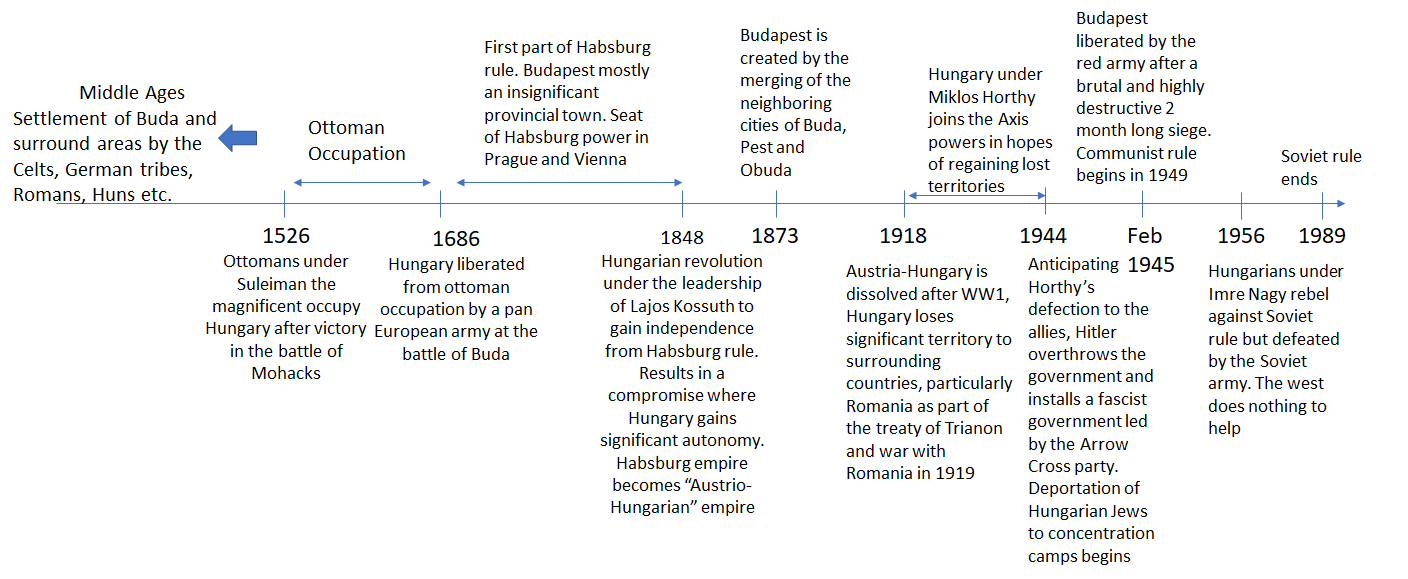
Budapest and Prague have many historical similarities. They were both part of the Habsburg empire, although Budapest’s status was far less significant than Prague until the Hungarian revolution of 1848. After WW2, both fell under Soviet occupation. There are also many notable differences – Hungary went through about 150 years of Ottoman rule prior to liberation and beginning of Habsburg empire. Hungary also collaborated with the Axis powers in WW2 until late 1944 when the Nazis overthrew the more moderate Hungarian government anticipating its defection and installed a hardcore fascist government led by the Arrow Cross party.
Knowing that Hungary had lived under Ottoman rule for 150 years, I expected to see traces from that period – such as Ottoman inspired architecture. According to one of my tour guides, there isn’t much, except for some thermal baths, the most original of which is Rudas which was built during the Ottoman rule. A few other prominent thermal baths are Szechenyi and Gellert. See this link for more info. I didn’t have time to try them out unfortunately. This would be one of the top items on my things to do when I visit next time. Another leftover from Ottoman rule is the spice Paprika, used in many Hungarian dishes.
Back to my trip. The next day, I joined another one of the free tours of the city. The tour left from the old town square (called Vorosmarty Ter in Hungarian) around 10:30 AM and we saw a number of popular sights in Pest. The river Danube splits up Budapest into two parts – “Buda” and “Pest” (which used to be separate cities until they were merged in 1873. My apartment was on the Pest side of the river. We then crossed one of bridges over the Danube to Buda and explored the Budapest castle complex. There was an American girl on our tour who had biked from Paris to Budapest (~3000 Km). It took her about a month to cover the distance – so she averaged about a 100Km/day. I was just astonished to hear how she managed this amazing feat (all by herself). Apparently, there are websites that allow you to plan these long bike trips through Europe. I would love to do a trip like this sometime!
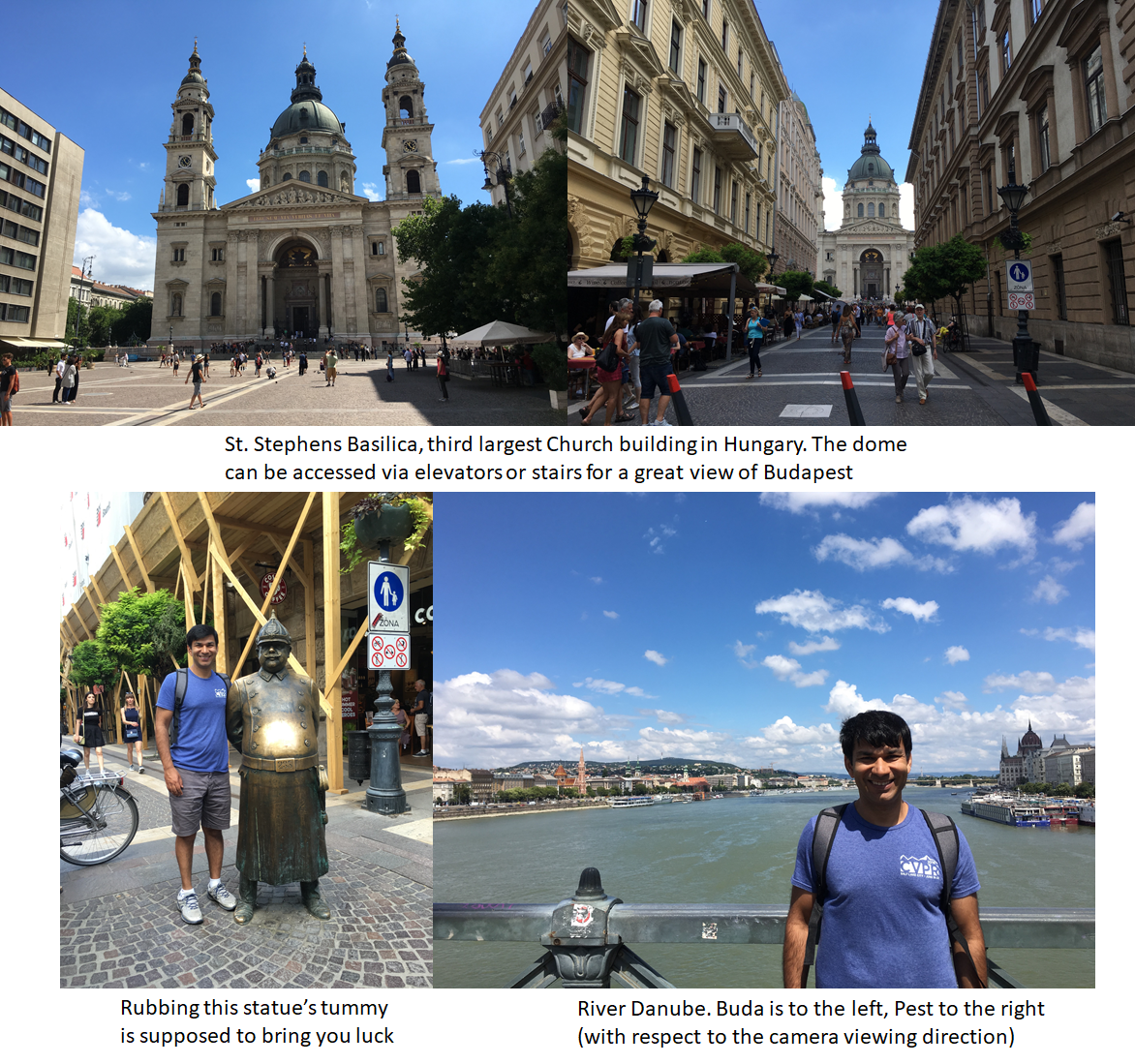
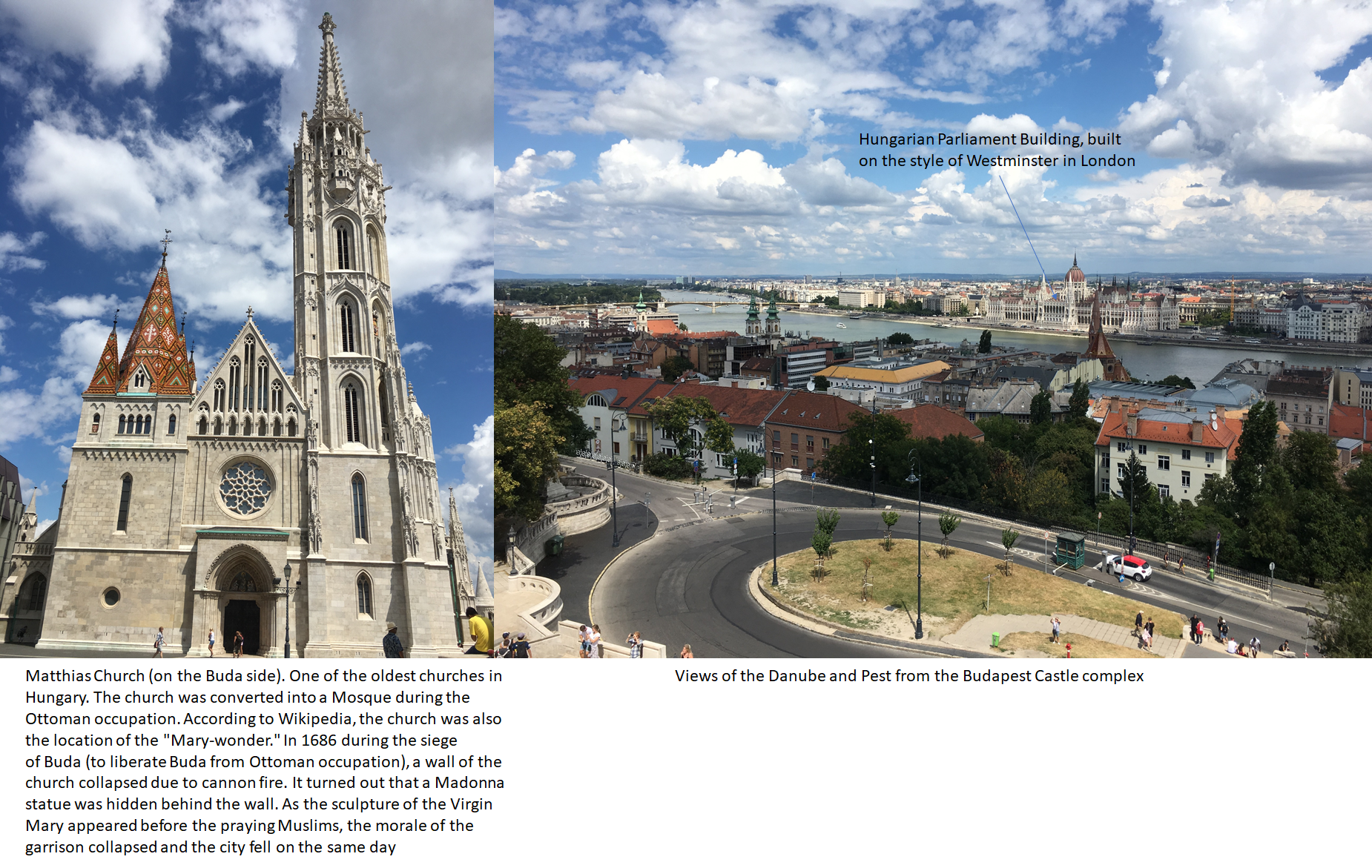
Stories from the Tour of Communism
In the afternoon, I did another one of the free walking tours, this time a tour focused on communism. There is a communism tour in Prague also, but I wasn’t able to join that tour. This tour is not so focused on sightseeing, but a bit more intellectually oriented and discusses how 5 decades of communist rule shaped and continues to shape Hungarian society. Our tour guide was a Hungarian girl with quite strong (and unfavorable) opinions about communism. She told us a number of interesting stories about life under communism. I’ll recount a couple of these stories.
External travel was heavily restricted in communist countries. People had two passports, a red passport for internal travel (within the communist bloc) and blue passport for travel outside the communist bloc. Blue passports were heavily restricted and only issued to people without any family history of revolutionary activity. The one country that Hungarians could travel to relatively freely was Austria, which escaped Soviet domination and was allowed to become a neutral country, with a market economy (the story of how this happened is very interesting in itself). In communist Hungary, supermarkets mostly stocked local and seasonal produce. It was relatively rare to get winter food products in the summer and therefore people (particularly young children) came to associate foods with festivals – for example foods you get in the winter with Christmas. One summer, an Hungarian family travels to Austria for vacation. They visit a supermarket and are amazed to see shelves stocked with all kinds of foods, not just what you can get in the summer. Seeing bananas in the shelves (which according to our tour guide were only available around winter time in Hungary), the little girl in the family, who had come to associate bananas with Christmas exclaims “oh they celebrate Christmas in the summer in Austria”! The rest of the family is quite excited to see an abundant supply of bananas also. They end up buying many boxes of bananas to bring back to Hungary for themselves and as gifts for friends (imagine giving a banana as a gift). However as they are crossing the border, the bananas are discovered by the border guards who tell the family that they are only allowed to bring a few boxes. So the family bribes the guards by giving them a few boxes and are able to bring the remaining boxes into Hungary. The border guards eat some of the bananas and sell the remainder in the black market to supplement their meager salaries.
According to our tour guide, being able to bring foreign products back was a strong incentive for the communist elite, athletes, scientists and engineers and other members of the professional class who were allowed limited amount of international travel.
Another story was about Trabant, the quintessential communist car that dominated the streets of Hungary in communist times. So long was the waiting list for a Trabant that in order to a get a Trabant in your thirties, you’d have to place an order around when you turned 18. What the car lacked in creature comforts, it made up in simplicity. Hungarians were experts in patching up their Trabants. The car became such an important part of the Hungarian family that a picture of the family Trabant would often appear after the pictures of the kids in the family photo album.
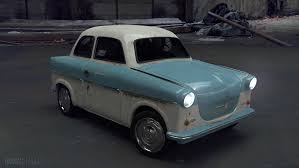
Interestingly, it is possible to rent a Trabant in Budapest. Something to do for the next time. Perhaps I can visit the thermal baths in a Trabant. Two bucket list items crossed out in one stroke!
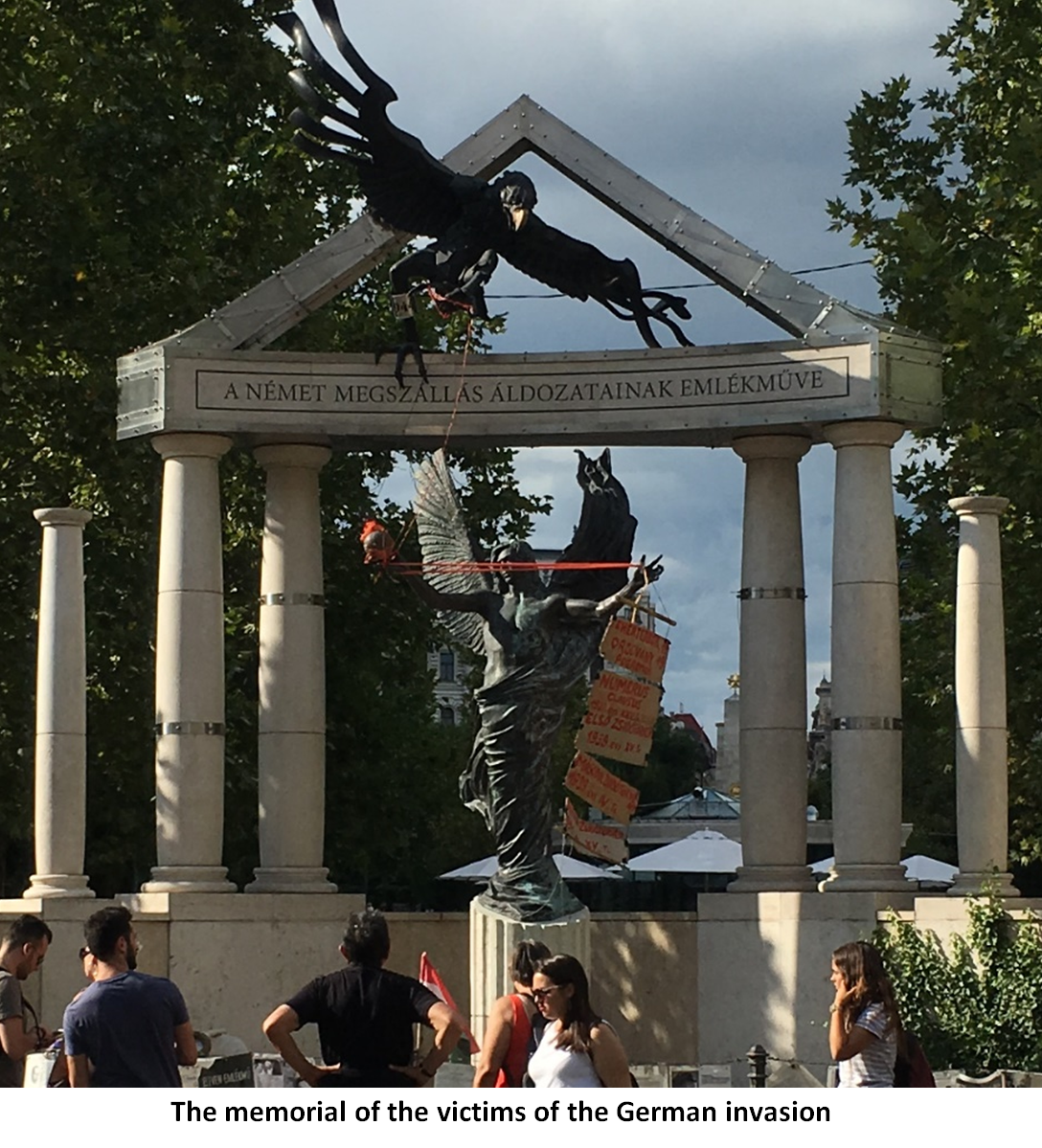
The picture above is of a memorial erected in 2013 to commemorate the people who died and/or suffered during the Nazi occupation of Hungary in 1944. It shows Archbishop Gabriel , patron of Hungary with the eagle of Nazi Germany hovering above. A lot of people feel that the memorial is too simplistic and ignores Hungary’s active collaboration with the Nazis during WW2 and active support in the deportation of Hungary’s Jewish population. Indeed, a group of people was protesting nearby and distributing fliers. According to our tour guide, this is a regular occurrence. I have translated the text on their slogan from Hungarian into English using Google translate.
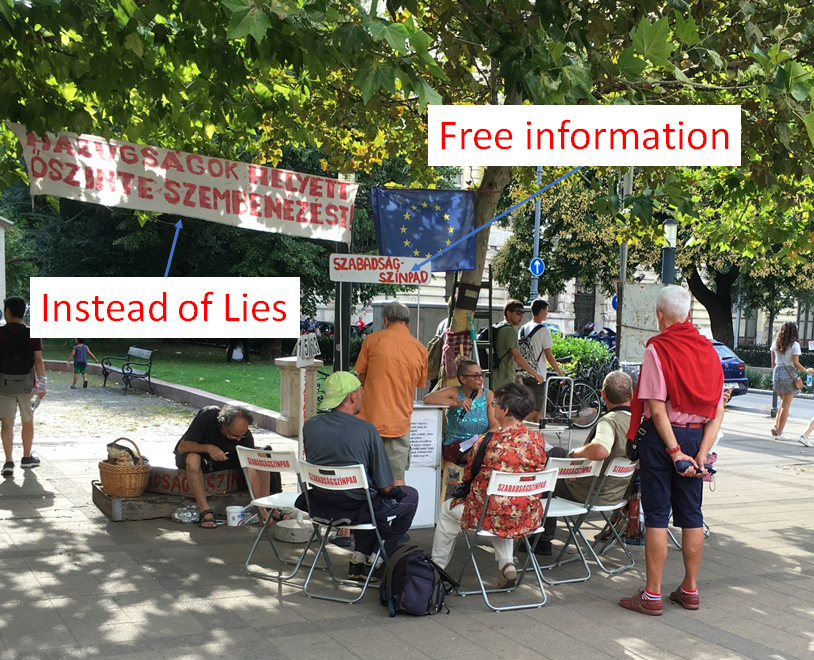
Another spot full of memories of Hungary’s turbulent past is the freedom square (“Szabadsag Ter” in Hungarian). Here is a nice article about the various monuments in the square. After the liberation of Hungary from Nazi occupation, the USSR erected a large obelisk topped with a Communist star, in honor of the Red Army’s “liberation” of Hungary. This monument has been the subject of scorn from many in Hungary who view it as a monument to the beginning of soviet repression rather than liberation. Removing the monument however risks endangering relations with Russia. When Estonia removed similar war monuments in 2007, Russia responded with a barrage of sanctions.
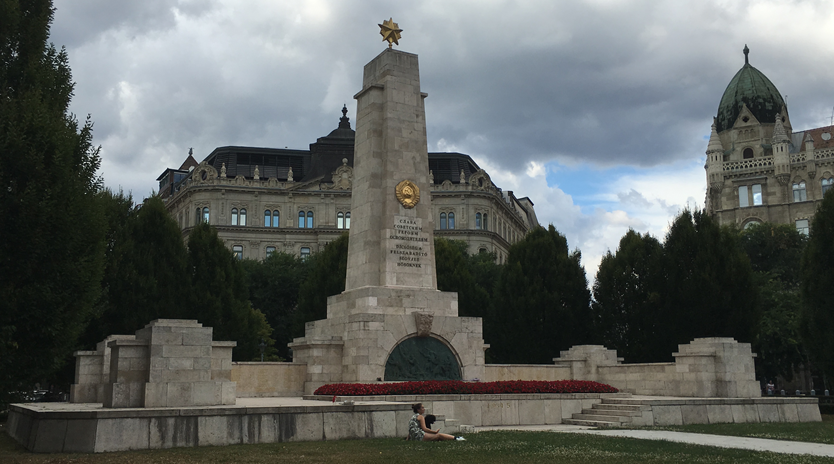
In 1996, real estate tycoon Sándor Demján provided the funding for a statue of the hero of Hungary’s anti-Soviet 1956 uprising, Imre Nagy, to be erected between Freedom Square and the Parliament at a plaza called Martyr’s Square. Nagy stands on a bridge over an artificial pool of water. With his back to the Soviet monument, he gazes toward the looming neo-Gothic parliament building, an emblem of Hungary’s new democracy. This major tourist attraction allows visitors to mount the bridge and walk toward freedom.
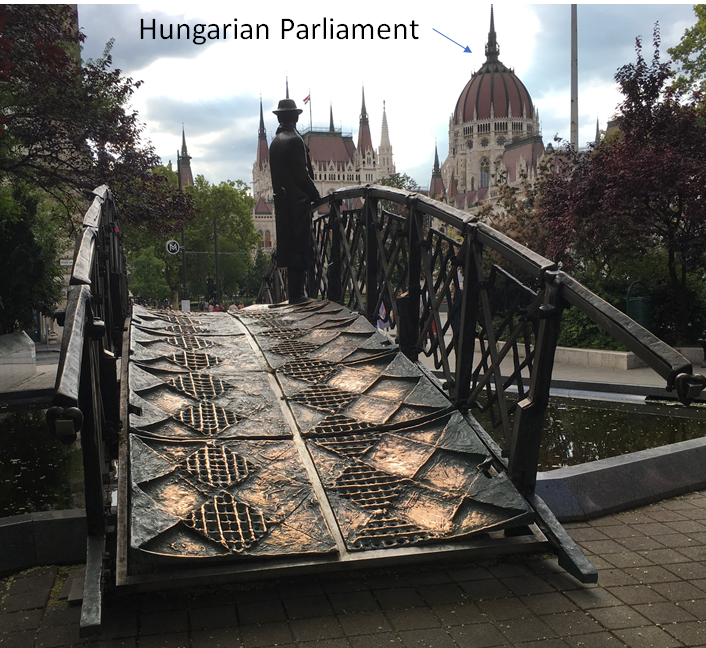
In 2010, Victor Orban, the president of Hungary facing increasing pressure to remove the Soviet Victory memorial, resorted the time honored tactic of installing a monument with a contrary meaning nearby. In the summer of 2011, a larger-than-life Ronald Reagan, a popular figure among Hungarians for his hard line against Communism, was unveiled. The symbolism is unmistakable – up the street, Imre Nagy has his back to the obelisk; Reagan confronts it head on. With a forward stride, he looks as if he is about to walk through the structure and on to the American embassy on the other side.
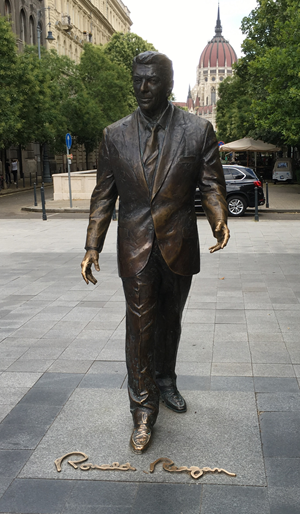
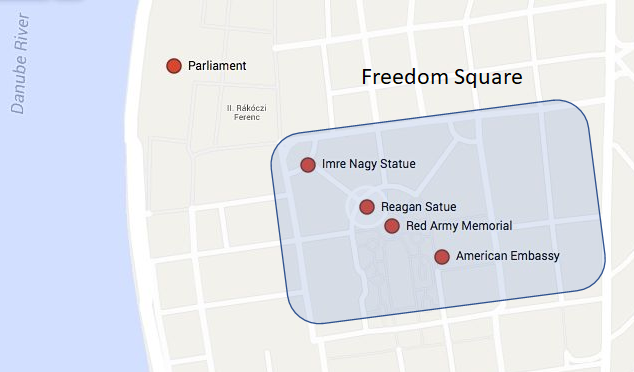
I have a few other stories from the communism tour, but you are probably tired of history by now.
That sums up my stay in Budapest. I was highly impressed by the beauty and charm of central Europe. I look forward to visiting again and exploring more. For a history buff like me, Europe presents endless possibilities to explore. I was thinking to myself that millions of central Europeans immigrated to the US during the 19th century. Their cities were just as beautiful then as they are now, while America was just getting started. I wonder how they felt about leaving their ancestral homeland behind and arriving in America. For many of them, this was a one way trip.. I’m of course aware that people left to flee poverty, wars, avoid being drafted into the army, religious persecution in some cases etc. But the contrast between the architecture splendor of Europe and the utilitarianism of American architecture (built to be cost effective and convenient rather than enchant) is stark even today, let alone how it must have been in the 19th century.
The next morning, I took a bus to the Budapest airport (about a 30 minute ride, ~4$ ticket) and flew back to Helsinki for some more family time. We did some local sightseeing around Helsinki and I also went salsa dancing a couple of times and made some new friends.
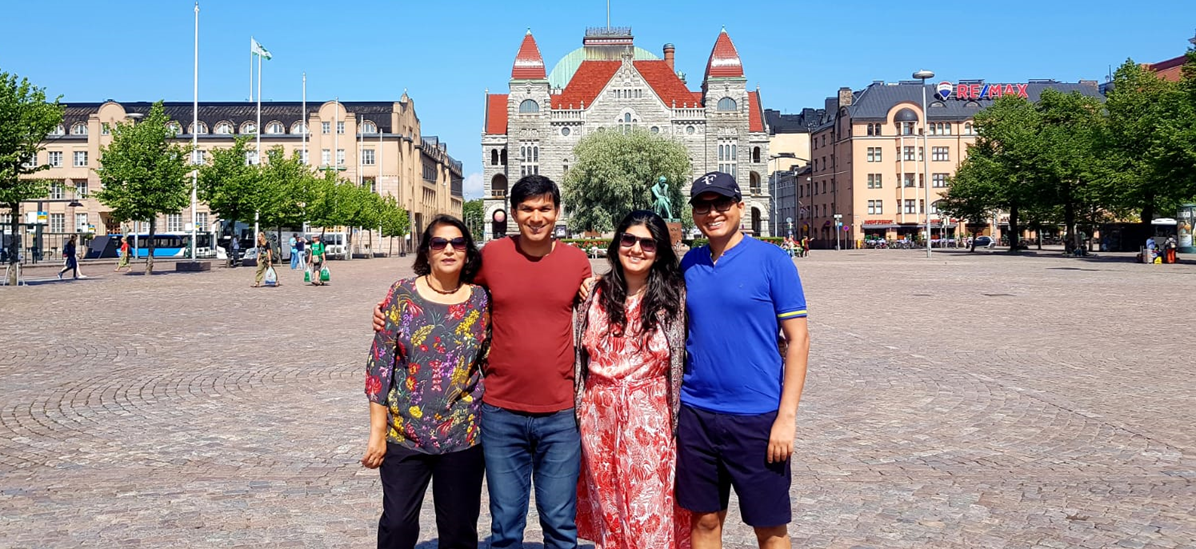
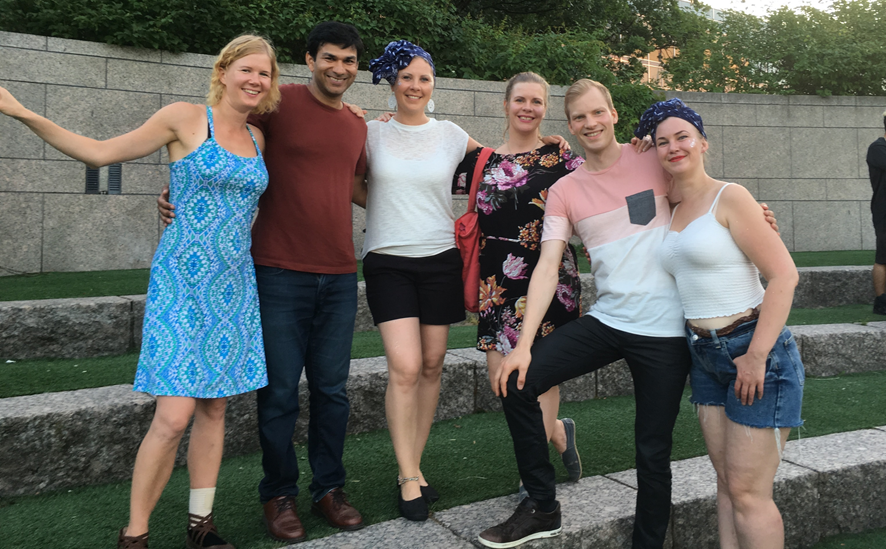
That’s the end! Hope you found this informative and entertaining. If you read this until the end and are still awake, message me and I’ll buy you a drink 🙂

First, I didn’t know I’d get a reward just for reading this, which I found really well-written and interesting–but now you owe me a drink, can’t wait to collect 😛
Second, my take on why the curtains were drawn in the Swedish Palace, and I’ve noticed in other palaces and museums, is that they are protecting the antique and historical painting, tapestries, furniture and the like from fading or damage over the years from natural light.
The explanation of the statues in Budapest is fascinating! I don’t remember realizing that when I was there, even though I remember seeing each of them independently. When we were in Prague, the tour guide told a sad story about how the Czech people thought they were heading towards freedom and reform, and the “Prague Spring” had started, and then recalling the day as a little girl that the Soviet Union returned to put a stop to it–I think in 1968 (the Warsaw Pact invasion?). She still had a lot of hatred against Russia and anything even remotely related to the former USSR for the terrible years that followed.
Definitely want to visit Stockholm and Helsinki now, and Denmark is also on my list–I heard a cool story about the Danes when I was last at the Holocaust Museum, I’ll have to tell you about it when we get that drink! Thanks for sharing your experiences and the history behind it!
Thanks a lot Sara for sharing your stories and explanation of the drawn curtains. Makes perfect sense. Look forward to seeing you soon 🙂